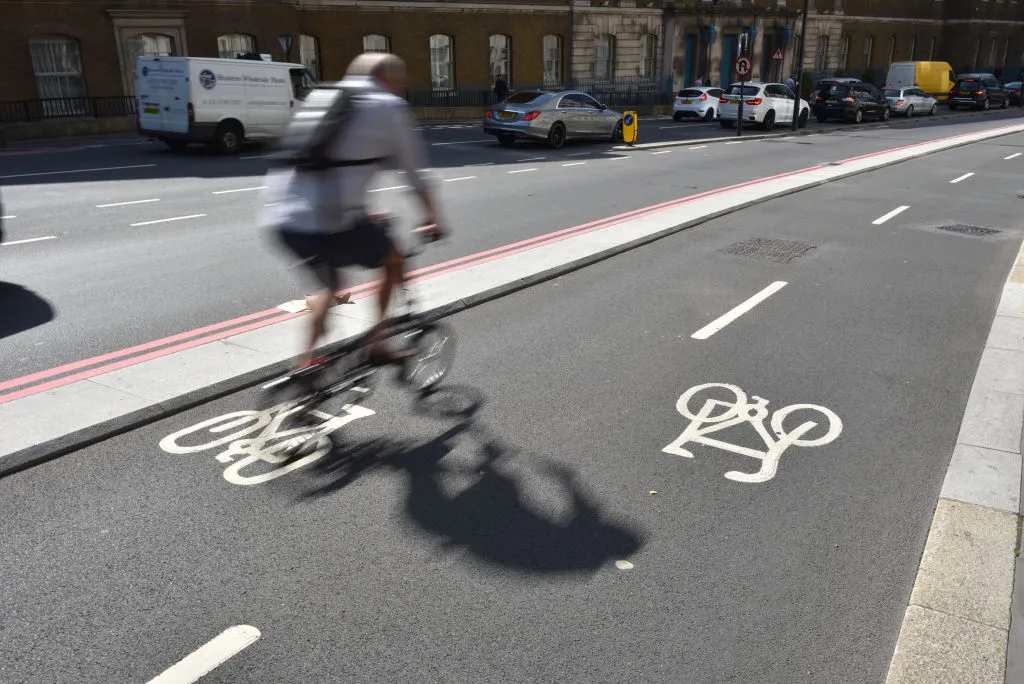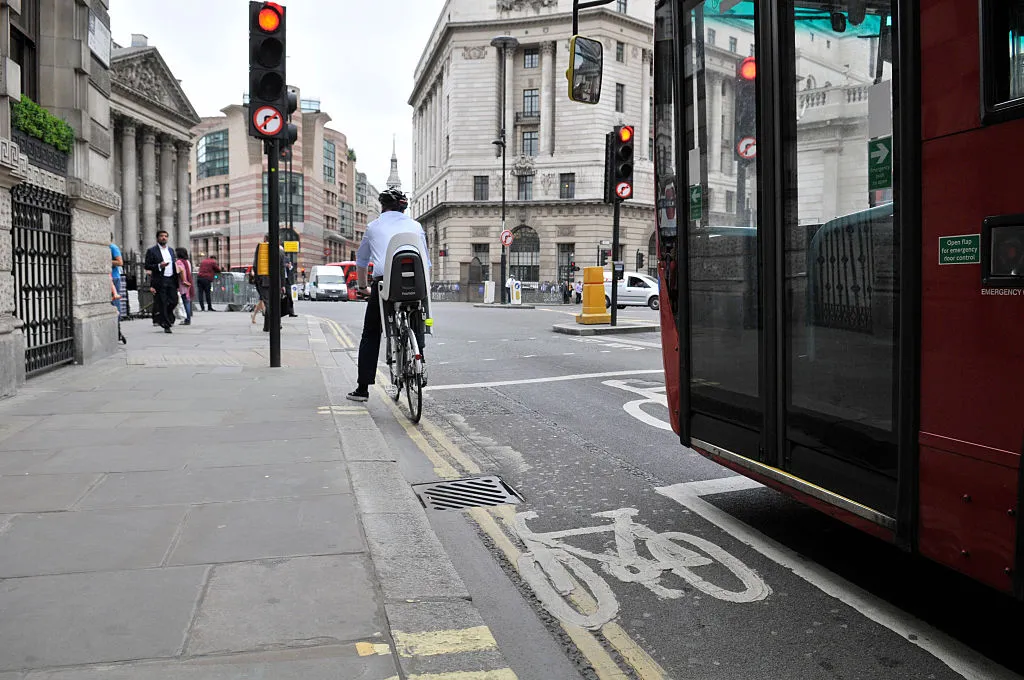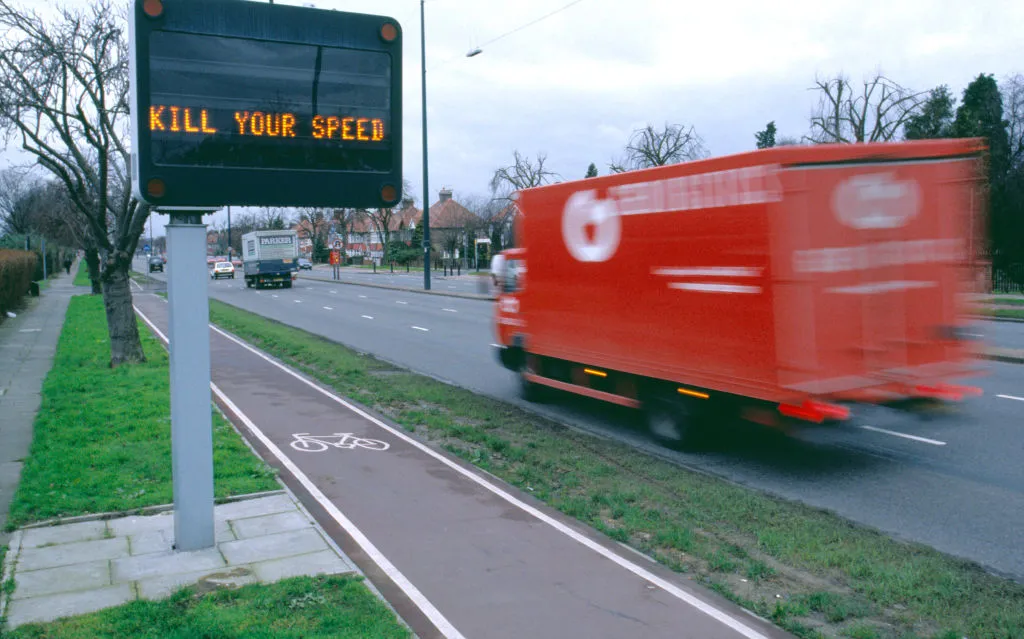An abridged version of this article first appeared in Cycling Plus magazine. Issue 389 is out now – subscribe to Cycling Plus to receive a Castelli Squadra jacket worth £70 and save 30 per cent on the magazine shop price.
Amendments to the Highway Code designed, according to the Department for Transport, “to enhance safety for all road users [and] particularly those most at risk” are due to come into effect on Saturday 29 January.
The Highway Code is a mix of advice, guidelines, rules and mandatory legal requirements for all road users in England, Scotland and Wales, and changes to its wording have been under consideration for some time.
The new code includes a number of amendments that may benefit cyclists, including a hierarchy designed to protect vulnerable road users, updated guidance on riding two abreast and road position, and the introduction of a new technique called the 'Dutch Reach' to encourage motorists to check over their shoulder before opening a door.
Cycling UK, the cycling charity that campaigns for the interests of cyclists throughout the country, has called for updates to the code for the past decade and celebrated the latest step forward in getting the amendments it wanted.
Foremost in this is new wording that challenges what Cycling UK calls the ‘might is right’ mindset on our roads – the idea that the people in the biggest vehicles on the road hold all the cards.
The updated code introduces what is described as a hierarchy of road users – a “concept that places those road users most at risk in the event of a collision at the top of the hierarchy”.
It means those who pose the greatest risk to others have a higher level of responsibility, so a driver would have greater responsibility to look out for people cycling, walking or riding a horse.
“Everyone suffers when road collisions occur, whether they are physically injured or not,” says the proposed new text of the code.
“But those in charge of vehicles that can cause the greatest harm in the event of a collision bear the greatest responsibility to take care and reduce the danger they pose to others.”

Duncan Dollimore, Cycling UK’s head of campaigns, was effusive about the amendments, and said that “it enshrines in law the need for those who present the most risk on our roads to look out for those who are the most vulnerable. This can only make the roads safer for everyone”.
More than 16,000 people backed the amendments called for by Cycling UK when the government consulted on improving the Highway Code for vulnerable road users in 2020, according to Dollimore.
Other key changes include clearer guidance for drivers overtaking cyclists to give at least 1.5 metres when they do so and guidance on how motorists can use the ‘Dutch Reach’ technique when opening their door and stop the brutal ‘car-dooring’ that too many have suffered.
The ‘Dutch Reach’ says you should open a vehicle door using your hand on the opposite side to the door you are opening. A driver in the UK would open the door with their left hand; doing so would encourage them to turn their neck and look over their shoulder, and be less likely to slam their door into a passing bike rider.
“It shouldn’t take bravery to cross a road or ride to school with kids, but sometimes it feels that way,” says Chris Boardman, who last week was announced as the newly appointed active travel commissioner for England.
“These changes to the Highway Code clarify our responsibility to each other and simply reinforce what good road users already do. This refresh does more than offer guidance though, it makes our towns, cities and villages nicer places to live.”

There’s undoubted progress here for cyclists; the challenging of the ‘might is right’ idea is particularly pertinent, with the ballooning in size of cars – even before you get to the behaviour of some people driving them – making people riding bikes more vulnerable with every SUV redesign.
That said, many of the proposed changes are about having clearer language in the code, and are simply guidelines and advice (should not) rather than law (must not). Perhaps the biggest problem is that, for many, their knowledge of the Highway Code begins and ends with the passing of their driving test.
Hopefully, enough people can read this new text to take something from it and create more harmony on our roads, and the Department for Transport has belatedly announced a £500,000 publicity campaign to raise awareness.
Whatever you do, keep far more than 1.5m away from the reporting and reader comments of some media outlets when it comes to these changes, something I failed to do in my research. It’ll surely exaggerate even the substantial distance we have yet to travel to improve the lot of bike riders on Britain’s roads.
7 ways the updated Highway Code affects cyclists
Stanley Portus, digital writer
While some of these changes are new rules, others are simply updates or clarifications to the existing code. Here are seven of the most important Highway Code changes to keep in mind when cycling.
Road-user hierarchy
The updated Highway Code sets a hierarchy of road users, which places road users most at risk in the event of a collision at the top of the hierarchy.
This means those using heavier or quicker modes of transport should be especially vigilant for those who are at greatest risk.
“This principle applies most strongly to drivers of large goods and passenger vehicles, vans/minibuses, cars/taxis and motorcycles,” states the updated code.
While this update is aimed mostly toward those travelling in motorised vehicles, cyclists should be careful of horses and pedestrians, and everyone should be aware of children, older adults, or disabled people.
“Cyclists, horse riders and drivers of horse drawn vehicles likewise have a responsibility to reduce danger to pedestrians.
“None of this detracts from the responsibility of ALL road users, including pedestrians, cyclists and horse riders, to have regard for their own and other road users’ safety.”

Cycling in shared spaces
Reflective of the new road-user hierarchy, the Highway Code has fresh guidance on routes and spaces shared by pedestrians, cyclists and people riding horses.
Cyclists passing pedestrians, people on horses, or horse-drawn vehicles, should not do so closely or at high speed.
The code now advises you to slow down when necessary, let people know you are there, and not pass a horse on the left-hand side.
Riding in the centre of the lane
While cyclists have long been advised to ride in the centre of the lane, for improved visibility and to deter unsafe passes, the Highway Code has been updated to formalise this advice in given situations.
The new update says cyclists should cycle in the middle of the lane on quiet roads, in slow-moving traffic, or when approaching junctions or road narrowings.
The code also says cyclists should maintain a distance of 0.5m from the kerb edge when cycling on busy roads or with traffic that is moving faster than them.
The new code also clarifies that cyclists can ride two abreast – often a source of conflict on roads. While this has always been the case, a change in the language now places the emphasis on rider safety.
The previous version of the Highway Code stated cyclists should “never ride more than two abreast, and ride in single file on narrow or busy roads”. The updated code says: “You can ride two abreast and it can be safer to do so, particularly in larger groups or when accompanying children or less experienced riders.”
Drivers must leave 1.5m of space when overtaking cyclists
The Highway Code now includes updated guidance on safe passing distances and speeds for people driving or riding motorcycles.
The updated code says they must leave at least 1.5m when overtaking cyclists at speeds up to 30mph, “giving them more space” when overtaking at higher speeds.
The code also confirms that cyclists can pass stationary or slow-moving traffic on the right or left.

Using cycle lanes
While cyclists have never been obligated to use cycle lanes, the updated Highway Code simplifies the language around the use of bike lanes.
The new code advises cyclists to use cycle lanes and tracks “where they make your journey safer and easier".
This, it says, will depend on the rider’s skills and the “situation at the time”, and clarifies that “cyclists may exercise their judgement and are not obliged to use them”.
Cycling at junctions
The Highway Code also has new rules regarding cycling at junctions.
When turning into or out of a junction, cyclists should give way to people who are crossing or waiting to cross.
If a cyclist is going straight ahead at a junction, they will have priority over traffic waiting to turn into or out of side roads, unless the road markings indicate otherwise.
The new Rule 75 outlines two-stage turns. At some signal-controlled junctions, there may be signs and markings informing cyclists to turn right in two stages.
Firstly, when the light turns green the cyclist should go straight ahead to the location marked by a cycle symbol and a turn symbol, and then wait there. Then, when the lights turn green on the far side of the junction, they should complete the turn.
Priority at roundabouts
The Highway Code will be also be updated to clarify that motorists should give priority to cyclists on roundabouts.
The new guidance says drivers or motorcyclists should not attempt to pass cyclists in their lane and should allow cyclists to move across their path as they travel across roundabouts.
The code already says cyclists can stay in the left-hand lane as they cross roundabouts. The new guidance will be added to advise drivers to take extra care when entering a roundabout to make sure they do not cut across cyclists in the left-hand lane.
The code says you can ride in the right-hand lane, too, and move left when approaching your exit.
